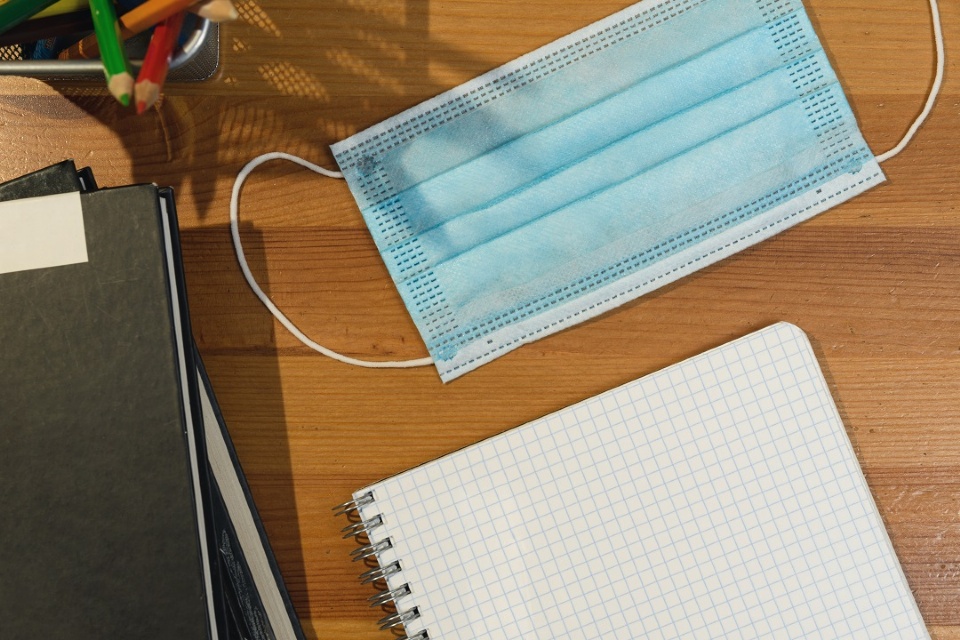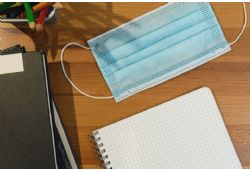Cody Nowostawsky,
a Laurentian elementary school teacher, believes teachers should openly discuss
ways to deal with stress and anxiety with primary school children. “It becomes
even more important in grades 4, 5 & 6,” she says. “Teachers should let
students know that feeling stress and anxiety during COVID-19 is normal. The
main strategy will be to normalize their school life.”
Nowostawsky suggests
explaining the benefits of physical activity, such as outdoor sports or games
along with creative activities (art, painting, etc.) as a way to combat stress.
“It is also beneficial for students to spend less time on social media,
watching TV and listening to the radio,” she says. “It will be challenging for
students and teachers to follow the new COVID-19 protocol; nevertheless students
are excited to return school to see their friends and teachers.”
A long-time
professor in business school at a Montreal university says that students and
teachers know there will not be conventional classes for now. He says teachers
will deal with students’ questions the best way they can. He will break classes into smaller groups so
students will have an easier time focusing.
Many professors
will use PowerPoint presentations augmented by pre-recorded introductions and
explanations. Visual and auditory tools can assist students to learn. Initially it may feel a bit different for
students and teachers, but many teacher hope that by using online tools such as
Zoom, this will allow for easy meetings with students.
According to the
Anxiety Canada website, here are some ways teachers can help students with
their anxiety;
1. Validate,
listen, and support students as they may be experiencing anxiety,
disappointment or anger. Empathize with students.
2. Be honest and
encouraging. Teach students to use realistic thinking skills and come up with their
own solutions. For example, a teacher might ask, “What do you think you can you
do to calm yourself down?”
3. Encourage a
gradual approach, not avoidance. Facing fear promotes resilience and reduces
anxiety by helping youth realize they are capable of coping.
4. Praise and
reward students for being courageous. Let them know you will get through this
together.
5. Model good
coping behaviors for students – be calm, honest, and caring. How you handle
your own fear and stress will impact how children assess their situation.
6. Take care of
yourself and know your limits to maintain your own physical and mental
well-being. Be compassionate to yourself as well as others.
7. Provide clear
information to families as early as possible so that children and families will
be less anxious.
Even though pandemic-related
issues will create some anxiety for students, with the helpful and strong
support of parents and teachers, students
should come through this on a positive note.

 In The Latest Issue:Latest Issue:
In The Latest Issue:Latest Issue:
- A Bittersweet Farewell
- The new Laval Aquatic Co...
- The End of an Era:
Articles
Calendar
Virtual- ANNUAL TEACHER APPRECIATION CONTEST
- APPUI LAVAL
- ARTS & CULTURE
- CAMPS
- CAR GUIDE
- CCIL
- CENTENNIAL ACADEMY
- CHARITY FUNDRAISING
- CITYTV
- COSMODÔME
- COMMUNITY CONNECTIONS
- COVER STORY
- DINA DIMITRATOS
- ÉCOLE SUPÉRIEURE DE BALLET DU QUÉBEC
- EDITORIALS
- ÉDUCALOI
- EDUCATION
- EMPLOYMENT & ENTREPRENEURSHIP
- FÊTE DE LA FAMILLE
- FÊTE DU QUARTIER SAINT-BRUNO
- FAMILIES
- FESTIVAL LAVAL LAUGHS
- FÊTE DE QUARTIER VAL-DES-BRISES
- FINANCES
- GLI CUMBARE
- GROUPE RENO-EXPERT
- HEALTH & WELL-BEING
- 30 MINUTE HIT
- ANXIETY
- CHILDREN`S HEALTH & WELLNESS
- CLOSE AID
- DENTAL WELLNESS
- EXTREME EVOLUTION SPORTS CENTRE
- FONDATION CITÉ DE LA SANTÉ
- GENERAL
- HEARING HEALTH
- MESSAGES FROM THE HEALTH AGENCY OF CANADA
- MENTAL HEALTH
- SEXUALITY
- SOCIAL INTEGRATION
- SPECIAL NEEDS
- TEENS
- THE NUTRITION CORNER
- THE NUTRITION CORNER - RECIPES
- VACATION DESTINATION
- WOMEN'S FITNESS
- WOMEN'S HEALTH
- HILTON MONTREAL/LAVAL
- HOME & GARDEN
- INTERNATIONAL WOMEN'S DAY
- JAGUAR LAVAL
- LAVAL À VÉLO
- LAVAL FAMILIES TV SHOW
- LAVAL FAMILIES MAGAZINE CARES
- LAVAL URBAN IN NATURE
- LE PARCOURS DES HÉROS
- LES PETITS GOURMETS DANS MA COUR
- LEON'S FURNITURE
- LEONARDO DA VINCI CENTRE
- LFM PREMIERES
- LIFE BALANCE
- M.P. PROFILE
- MISS EDGAR'S AND MISS CRAMP'S SCHOOL
- MISSING CHILDREN'S NETWORK
- NETFOLIE
- NORTH STAR ACADEMY LAVAL
- OUTFRONT MEDIA
- PASSION SOCCER
- PARC DE LA RIVIÈRE-DES-MILLE-ÎLES
- PÂTISSERIE ST-MARTIN
- PIZZERIA LÌOLÀ
- PLACE BELL
- PORTRAITS OF YOUR MNA'S
- ROCKET DE LAVAL
- SACRED HEART SCHOOL
- SCOTIA BANK
- SHERATON LAVAL HOTEL
- SOCIÉTÉ ALZHEIMER LAVAL
- STATION 55
- STL
- SUBARU DE LAVAL
- TECHNOLOGY
- TEDXLAVAL
- TODAY`S LAURENTIANS AND LANAUDIÈRE
- TODAY`S LAVAL
- WARNER MUSIC
- THIS ISSUE
- MOST RECENT
Magazine
Managing Student Stress and Anxiety During COVID-19
Articles ~e 105,7 Rythme FM 4 chemins Annual Teacher Appreciation Contest Appui Laval Arts & Culture Ballet Eddy Toussaint Camps THIS ISSUE MORE...
CONTESTS Enter our contests
CONTESTS Enter our contests
CALENDAR
Events & Activities
COMMUNITY Posts Events
PUBLICATIONS Our Magazine Family Resource Directory
LFM BUSINESS NETWORK Learn more
COUPONS Click to save!
COMMUNITY Posts Events
PUBLICATIONS Our Magazine Family Resource Directory
LFM BUSINESS NETWORK Learn more
COUPONS Click to save!
SUBSCRIPTIONS
Subscribe to the magazine
Un-Subscribe
E-NEWSLETTER Subscribe to our E-newsletter Un-Subscribe
WRITE FOR US Guidelines & Submissions
POLLS Vote today!
E-NEWSLETTER Subscribe to our E-newsletter Un-Subscribe
WRITE FOR US Guidelines & Submissions
POLLS Vote today!
ADVERTISERS
How to & Media guide
Pay your LFM invoice
SUGGESTIONS Reader's Survey Suggest a Listing
LFM About Us Our Mission Giving Back Contact Us
SUGGESTIONS Reader's Survey Suggest a Listing
LFM About Us Our Mission Giving Back Contact Us
 PICK-UP LOCATIONS
Get a copy of LFM!
PICK-UP LOCATIONS
Get a copy of LFM!
TERMS & CONDITIONS Privacy | Terms
ISSN (ONLINE) 2291-1677
ISSN (PRINT) 2291-1677
Website by ZENxDESIGN



 BY:
BY: 
Tweet
Share